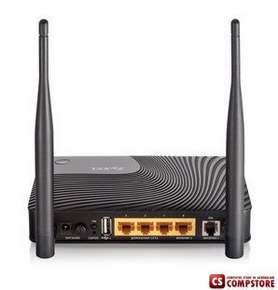


- Usb drive format for zyxel install#
- Usb drive format for zyxel serial#
- Usb drive format for zyxel update#
- Usb drive format for zyxel manual#
NEVER EVER install any Kernel or Grub, the Debian running inside these devices has a custom Kernel, if you install another (not from the forums above) it will not boot anymore. The installation will take around 10 GB of the drive inside the NAS for system partitions, the rest of the space will become another partition you can use for data (look in Storage -> Filesystems to set Openmediavault to mount it and use it).
Usb drive format for zyxel manual#
When I did it, something of OMV failed to install and required a manual tweak, if it happens to you too (I think it was fixed but you never know), post the error and I'll see what I can do. It will take a while because it has to download quite a few things, and its weak processor will slow down the installation process. Howto install OpenMediaVault on Debian 7.x (Wheezy) Then you follow the instructions here to install OpenMediaVault, (ignore pre-requirements because you have already a running Debian Wheezy in that NAS) (when you have finished the setup it would be a good idea to change the default password of root user) You need to connect to it with SSH (remote terminal), if you don't know how, see this tutorial If it was connected to ethernet, it will get an IP address automatically when rebooting.Īt this point it's just a headless (no graphical interface) Debian Wheezy system like any other. It has to unzip the contents of that file (among other things), and that's a weak processor, so it will take some time.Īfter it has finished it will reboot on its own, and if all went well it will be running Debian ARM this time. Place a EMPTY HDD in left slot (the installer WILL ERASE ANYTHING ON THAT DRIVE, so IT MUST BE EMPTY), remove the drive from the other slot, place the USB flash drive into the front USB port, power on the device. Then place this file in the same USB flash drive you placed the files of the installer zip above. Very important as the install script will look for this name to install Debian. Now you should get a file called Debian-3.16. Now use Peazip to compress it again, but this time select Gzip (it is set to 7z by default, you don't want that, change it to Gzip). Then extract the archive you downloaded, you should get another archive called Debian-3.16.0-kirkwood-tld-2-rootfs-bodhi.tar The file is Debian-3.16.2, so it is compressed with bzip2 and I have no idea if the firmware of the device is able to handle it, so we need to convert the archive to tar.gzip first.ĭownload Peazip (it is portable version, will run without installing itself) Then download the rootfs (the Debian system for these devices, same as link above) …INUX/nsa320-DebianARM.zipĮxtract the contents of that zip inside an EMPTY USB flash drive. So, download the installer zip I modified from here.
Usb drive format for zyxel serial#
(this can be changed easily from inside the Debian system, andįrom a serial connection to the motherboard, but if you don't haveĮither working, it's not possible to do anything and you are in trouble) Set to boot from the left Sata drive, and won't boot again its ownįirmare.
Usb drive format for zyxel update#
More updated u-boots with plenty of advanced features are available in the forums of the links above, but it's dangerous to update as if you do it wrong the device can only be restored through the serial cable (IF it can be restored at all), just like updating a BIOS anyway.Īfter you followed instructions below and it did its thing, the NAS will be If you don't feel safe enough, DON'T DO IT.ĪFAIK, the u-boot (bootloader, the BIOS of this thing) is too old to be able to boot from USB, can only boot the NAS's original firmware from the flash on its motherboard (too small to install debian in it) or from Sata drives. These things are always done AT YOUR OWN RISK. Just like the tutorial I posted above for the NSA325V2, that is actually using a modified version of the Arch installer for the NSA 325. Will modify it a bit to make a version that allows you to boot Debian. Here for example there is a nice installer with simple instructions, but works for Arch linux, not for Debian. Nowadays there are easy installers using a script. Pioneers did it with serial cable to the board or with hacks from the web interface, and that's what is more commonly found in tutorials.


 0 kommentar(er)
0 kommentar(er)
